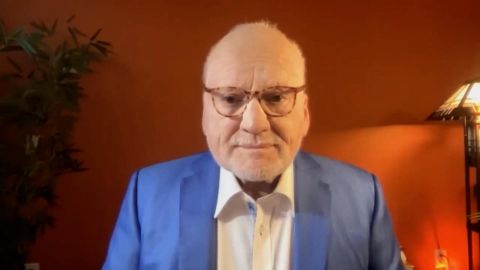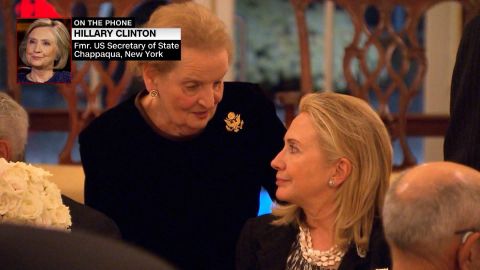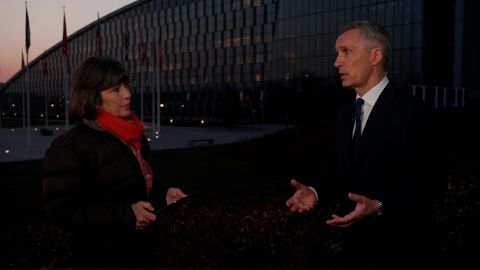Read Transcript EXPAND
CHRISTIANE AMANPOUR: So, this has been quite the exciting day. You have had a huge summit. President Biden has just left, a lot of activity going on. Is what you decided here what you were going in hoping for? What did you really want to come out with?
JENS STOLTENBERG, NATO SECRETARY-GENERAL: I wanted actually the very strong message that is coming from this summit, of unity, of support to Ukraine, of the importance of strengthening the defense — the defense of the alliance, especially this important alliance. And then, of course, that we need to put maximum pressure on Russia to end this senseless war.
AMANPOUR: So, a lot of people are very concerned. And I had an interview with President Putin’s spokesman and he talked about the nuclear option in certain instances. And we have just said that you have discussed this. And President Biden said the nature of the response by NATO would depend on the nature of the use, if there was a use of any kind of prohibited weapons. Can you give us any more insight into where the line in the sand is, what you would do?
STOLTENBERG: First of all, I’m very careful about speculating, because we are in a very dangerous situation. And if you start to speculate, you only add to the uncertainty. What is clear is that any attack on a NATO country would trigger the full response from the whole alliance. That’s the core responsibility of NATO. It’s one for all, all for one. That’s Article 5. And to make sure that there is no room for misunderstanding or miscalculation in Moscow about that commitment, we have significantly increased our presence in the eastern part of the alliance, not least with U.S. troops. There are more U.S. troops in Europe now than have been for many, many years. But, also, European allies are stepping up.
AMANPOUR: So you said that you had to reposture NATO, right, reposition it for the future. And there’s — I think there’s something like 40,000 NATO troops around right now. What are you looking at for the future with these additional formations that you have talked about, and where?
STOLTENBERG: These 40,000 troops under direct NATO command, together with 100,000 U.S. troops and other troops, they are part of imminent response to the Russian invasion of Ukraine. But we are now faced with a new reality. This will be with us for a long time, the consequences of this war. There is a new normal. And, therefore, the leaders today tasked the NATO commanders to put forward options for more longer-term adaptation, a resettled NATO deterrence and defense. That’s about more troops, but also more air capabilities and naval capabilities, to make sure that we provide credible deterrence also in the future.
AMANPOUR: And where? What countries?
STOLTENBERG: Across the alliance, but mainly in the eastern part of the alliance. This is partly about presence, but also partly about the ability to reinforce quickly if needed.
About This Episode EXPAND
It was a day of intense activity at an emergency NATO summit in Brussels, where Biden joined 29 other world leaders in a united front against Russia’s invasion of Ukraine. Madeleine Albright died yesterday at 84. Hillary Clinton discusses Albright’s legacy. How will Putin respond to sanctions? Will he look for a diplomatic solution to the war, or will he be more likely to escalate?
LEARN MORE


